I want to make a stage box (with light in it) so when the guitarist or singer steps on it, it lights up. In the box I want to use a 12W (or maybe later 2) LED lights (which have a normal EU power plug).
I want to make initially two means of turning them on:
- By stepping on the box (on a plateau)
- By pressing a foot pedal
The reason is that I don't know if I can make option 1 very reliable, so option 2 is a backup.
Also since both options might fail, I want to use rocker toggle switches to bypass both options (meaning if both rocker switches are ON/bypass, the light should always light up).
I changed the answer to use a relay (instead of using mains, as of the comment of MrGerber below).
I had the following circuit in mind, but I wonder:
- If it is a good way to bypass this way
- If for the foot bypass switch, I really need a DPDT switch (I couldn't find any other way).
- If I need another way as the relay.
(actually the 12W Led lamp is inserted with a normal power EU 220V plug, but I couldn't find a symbol for this).


– MrGerber Jan 05 '18 at 15:45